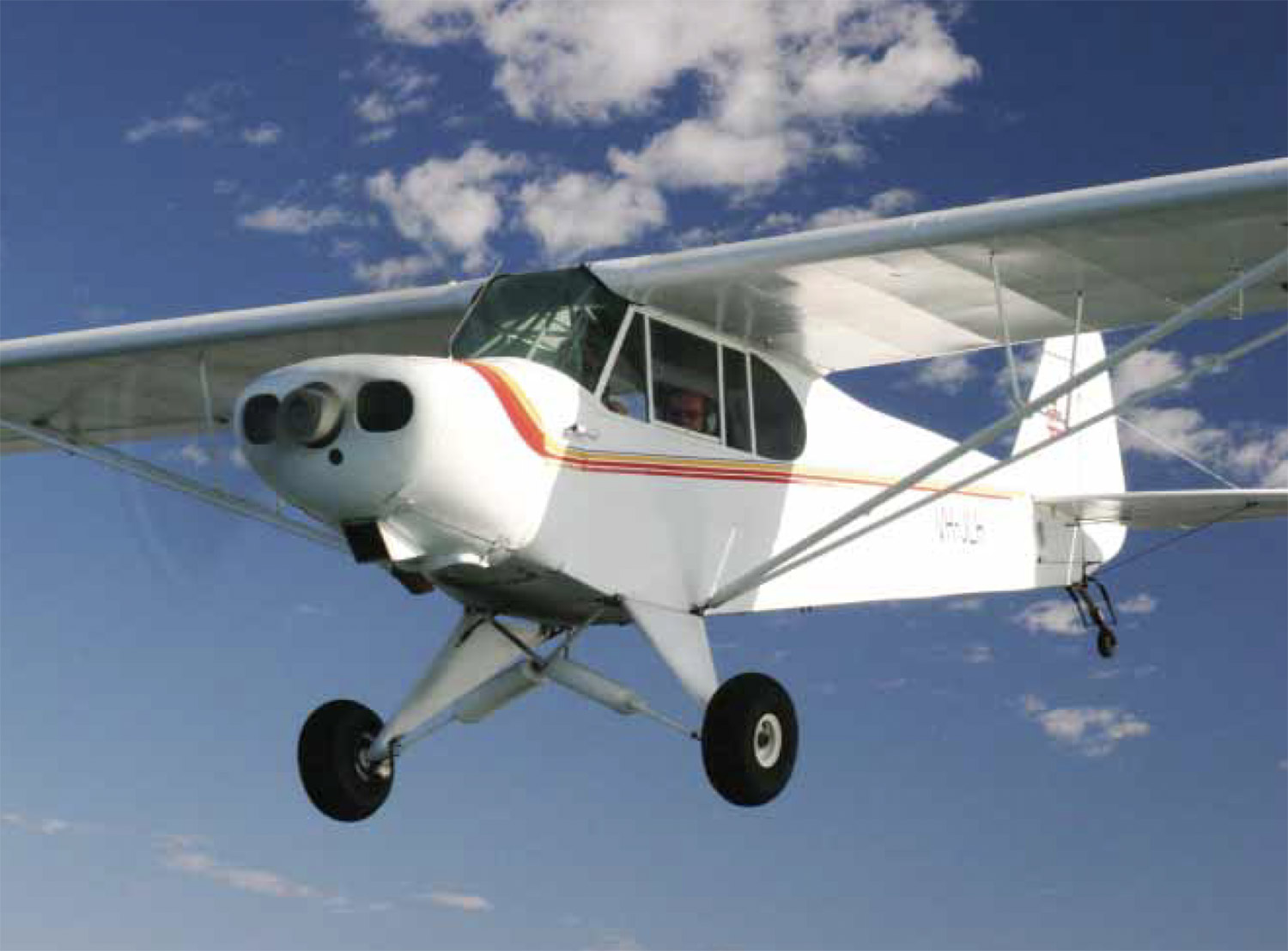 Recent interest in Light Sport Aircraft has, in part, shone a light on the venerable Piper Cub. Unfortunately for the tailwheel purists among us, Piper discontinued the Super Cub in 1994. However, 20 years earlier, aircraft spares dealer Richard Wagner of Wisconsin had already sensed there might be a market for a homebuilt version, so he drew up plans for a Cub look-alike.
Recent interest in Light Sport Aircraft has, in part, shone a light on the venerable Piper Cub. Unfortunately for the tailwheel purists among us, Piper discontinued the Super Cub in 1994. However, 20 years earlier, aircraft spares dealer Richard Wagner of Wisconsin had already sensed there might be a market for a homebuilt version, so he drew up plans for a Cub look-alike.
Initially marketed as the Wag-Aero CUBy, this later became the Sport Trainer, using engines of up to 125 horsepower. Wag-Aeros CUBy took advantage of elapsed time to mix the best of Cub features old and new with modern materials, and to increase both maximum weight and payload. A semi-aerobatic, clipped-wing version, the Acro Trainer, is also available, incorporating several modifications for increased strength and improved longevity in its aerobatic role.
Felton’s Choice
My buddy Rob Felton chose the highest-power version of all, the Super Sport, which uses engines up to 150 hp, and is distinguished by its enclosed cowlings. Developed from the lighter, earlier models, this is essentially a lightweight Super Cub with wood wings and no fl aps. The CUBy later spawned as further derivatives the side-by-side Cub Vagabond facsimile, the Wag-A-Bond, and a Piper Family Cruiser copy, the 2+2 Sportsman. Wag-Aero has sold more than 4000 kits and sets of plans to date.
Felton always loved the Cub concept of great short-field performance with peerless downward visibility. After building and operating an Evans VP-2, he became disenchanted with underpowered airplanes, so he started building a Cub-like Bakeng Deuce parasol monoplane. For this he bought a low-hours 150-hp Lycoming O-320-E2D from a Cessna 172 that had been blown over in a gale and written off. Unfortunately, he found the plans hard to interpret and lacking sufficient detail, so he quit working on it.
Then he saw an early advertisement for the Wag-Aero CUBy plans. There would be no more compromises-now he could make a proper Cub of his own! Better still, a high-powered version (this Super Sport) was an option in which he could use his Lycoming. Losing no time in ordering the plans and materials, Felton started building in 1982. The airplane took him just 18 months of spare-time working to build, though he admits trying to squeeze in a full 40 hours per week on the project. Experienced draftsman Bill Blake drew up the plans, and Felton says they were straightforward to follow. Indeed, he says the airplane was very easy to build, insisting the process was a true pleasure, partly thanks to the variety of materials (wood, steel, aluminum, fiberglass and fabric), so repeated operations in a single medium never bored him.
Wood Is the Root of It All
Traditional plank spruce wingspars carry glued together, built-up wood ribs with thin alloy sheet leading edges to form the traditional 12%-thick USA 35B airfoil. The whole is internally tube-and-wire braced, covered with modern Dacron fabric, and is supported by dual streamlined struts. (Today, pre-drilled aluminum spars, stamped-out aluminum ribs and aluminum tubing wingtip bows are options.) Unlike the original Super Cub, the Sport Trainer/Super Sport has no flaps, but in compensation it is a whopping 300 pounds lighter, so its takeoff performance is at least as good, and its climb angle even greater. Modern, tougher 4130 chrome-moly steel tubing replaces the original Cubs 1025 mild steel for the fuselage, fittings and tail surfaces, again fabric covered. A pre-welded fuselage has always been a CUBy option, but it was costly, and freight charges were prohibitive, so Feltons fuselage arrived as a bundle of steel tubing, which he tacked together for local approved welder Clyde Carstairs to finish.
One major change from the original Super Cub, whose metal spars terminate at the fuselage sides, were wood spars meeting overhead in the center fuselage, in the style of the earlier, lower-power Cubs. From this junction, four reinforcing tubes radiate downward to support the Super Sports heavier engine. These occupy the space originally for the fuel tank, so this model has dual 13-gallon tanks in its inner wings.
Inside, Felton has incorporated ingenious stowage. Aft er undoing a single Dzus fastener, the hinged aluminum sheet parcel shelf can be lift ed to reveal a rectangular compartment exactly suited to holding an Esky-that Styrofoam portable food (or, much more importantly, beer) carrier so beloved by Australians. Above and behind this, another panel folds down to reveal Feltons capacious finishing rod stowage, occupying the entire rear fuselage!
Be Up Front
Like the Super Cub (and unlike the earlier J-3 and L-4 liaison variant) the Super Sports pilot sits in front, where he has something of a view ahead, but believe me, there is no elegant way of getting into that seat. Place your right foot on the step behind the bottom of the struts, grasp a windshield brace with your right hand, steady yourself on the forward seatback with your left hand, bring in a bent left leg, fold it tighter with your left hand, lean forward (or backward), wedge that leg between seat and sidewall, catch your toe in a rudder cable, lose your footing, fall face forward onto the control column… Take heart. Getting in is easier than getting out.
Thanks to that cluster of overhead spar and tube ends, the front-seater has to sit surprisingly low, giving less forward visibility than the original. Squinting through and around those vertical tubes further reduces vision, but you get used to it, and after awhile you just accept things the way they are. The stick is where you would expect it, though the throttle is perhaps a little high on the left sidewall. The rudder pedals might seem a little close at first, but adding a 3-inch seat-bottom cushion helped both forward visibility and leg reach.
Looking down, I noticed a pair of smaller fi xed pedals behind the rudders on the floor. While they certainly help achieve retardation, and are cheaper and easier to install than the type having master cylinders incorporated in the rudder pedals, heel brakes are not my favorite supplementary means of steering. Apart from that, everything is pretty well where it is in a Super Cub, with basic flight and engine instruments (including a venturi-driven turn-and-bank) arrayed across the panel, master and magneto switches, intercom, ammeter and fuses up in the left wingroot, trim lever, carburetor heat and simple on/off fuel selector on the left sidewall. The mixture knob is at the main panels left extremity, with the radio on the right.
Starting is dead simple, despite the lack of a parking brake, and there are no checks to complete before moving off. Taxiing is a little more taxing but never difficult, providing you sit as high as possible. As we picked up a little speed, I enjoyed re-acquainting myself with the pleasant, jaunty, bouncing gait of a Cub with new bungees. OK, so you have to weave to ensure the way ahead is clear, but to make this easier you do have the classic Cub up-and-down-opening fuselage side, through which, with a bit of a lean to the right, you can see nearly everything ahead.
Another advantage of this horizontally split door is that you can fly all day with it open-a great way to keep cool if, like us, you are flying on a sweltering, 100 day. The lower half hangs flat against the fuselage side, while the upper portion floats up to fly horizontal, parallel with the wings under-surface.
Let’s Go…
The Cub being one of the worlds simplest flying machines, few checks are required prior to lining up for takeoff. Opening the throttle produced impressive acceleration with remarkably little vibration despite that big four-banger out ahead, and presumably at least partly thanks to the wood Hoff man prop. We were airborne at 45 knots indicated in a little over a couple of hundred yards, and soon soaring upward at 60 knots at a most un-Cub-like 1000 fpm in the extreme heat, despite being at maximum weight. Felton assured me this was not unusual, and rates of over 1500 fpm are easily achievable solo at best-rate climb speed of 55 knots, thanks to the Super Sports big wing and super-light 690- pound empty weight.
Heading for the coast and 3000 feet msl for these photographs, we throttled back a little to 2450 rpm and increased speed to a still enthusiastic 70-knot cruise climb. Cubs are almost instinctive to fly, and this one was no exception being, like them all, stable in all axes. Once we set 2350 rpm, the airspeed gradually rose to 85 knots (90 knots TAS), at which Felton assured me fuel consumption averages 7.5 gph, giving him 3 hours safe endurance for a 270- n.m. range.
A little coordinating rudder is needed for rolling into and out of turns, but anticipating this, I initially found myself overdoing my rudder inputs. The Super Sports rudder is remarkably effective, and you need only a dab for even the highest roll rates achievable. The ailerons are perhaps a trifle heavy and not quite as effective as a modern airplanes, but they’re still better than on many other aircraft, including my Aeronca Champ.
Any high wing intrudes a little into turns, but thanks to this Super Sports completely transparent roof, an inward view opens up once the bank has increased to more than 45. At that angle and about 60 knots the airplane revolves on a dime, making it a great observation aircraft .
Slow Flight’s a Dream
Docile slow flight was always the Cub family’s forte, and this later version is no exception. Although we were at the 1400-pound maximum weight and with an aft c.g., I just couldn’t get it to stall properly. Th e electric warning horn (a useful addition that was never a Piper option) sounded at 37 knots indicated, coincident with light buffet. With a massive pull and full aft stick it was just possible to make the nose nod at 34 knots in gentle sink, although there was never a proper pitch down. With 2000 rpm, the warning horn came at 31 knots, and the airspeed got right back to 28 knots. Th e right wing tried hard to drop, but still without a proper G break. With stall speeds this low, why would you want flaps, anyway?
Giving up on the nearly impossible task of getting this Cub to stall, I concentrated on the magnificent panoramic view as we floated back to Feltons base in Western Australia. Nearing home, it was time to descend into the patterns bumpier, sun-baked air. The Super Sports best glide speed is 55 knots, but partly to fit in with other traffic, Felton suggested entering the pattern at 70, decreasing power for late downwind and base leg at 60 knots, and 55 on final, at which, two-up, the airplane was nicely in trim with the tab lever fully back. As Felton says, If it feels right, it is right. This lightweight Super Sport glides incredibly well, so I found myself slipping on several approaches. Fortunately, any Cub has enough rudder and aileron authority to make a superb, plummeting slip, so glideslope control is never difficult, despite the lack of flaps. At 55 knots the view ahead is OK, but much slower, and with the low seating position most forward visibility disappears. I tried one three-pointer, but lacking flaps, we floated so far during the holdoff , and the forward view was so poor in the touchdown attitude, that I reverted to Feltons suggested wheel landings. Indeed, throughout the rollout this little airplane wanted to keep flying, skipping and floating back into the air despite being at barely more than a walking pace.
Wheel landings worked better. I could see where we were going, and even with a trickle of power the touchdown speed was remarkably slow. Once I had established where the ground was, it was easy to pop the control column forward and pin us onto the turf runway. Easing the stick further forward maintained good visibility as our speed gently subsided, and then pulling it back as the tail became heavy allowed a gentle braking. Even with my unskilled handling we rolled to a halt in little more than 300 yards, and Felton has repeatedly demonstrated that 300-foot, full-stop landings are eminently feasible with practice. Who needs flaps?
Feltons Current Follies
Nowadays, Rob Felton spends most of his time renovating airplanes for other people, and his workmanship has become a byword for excellence in Western Australias small aviation community. But he is still justifiably proud of the second airplane he built with his own hands, and in which he is now able to introduce his own sons to the pleasures of aviation.
For those who always aspired to a Cub, but want a brand new one, or cannot afford the inflated prices genuine vintage examples now fetch, a Wag- Aero Sport Trainer off ers one option. If you want to better a genuine Super Cubs takeoff and climb performance without fi tting a 180-hp engine, then the Super Sport may be just the airplane for you.
WAG AERO SUPER SPORT
- Kit price: $16,000
- Plans price: $125
- Estimated completed cost: $30,000 – $48,000
- Estimated build time: 2000 hours
- Number fl ying (at press time): 200 (all Sport Trainer/SS)
- Powerplant: Lycoming O-320, 150 hp @ 2700 rpm
- Propeller: Hoffman fixed-pitch
- Powerplant options…. 85 – 150 hp, Lycoming and Continental
AIRFRAME
- Wingspan: 35 ft 3 in
- Wing loading: 7.84 lb/sq. ft
- Fuel capacity: 27 gal
- Maximum gross weight: 1400 lb
- Typical empty weight: 690 lb
- Typical useful load: 710 lb
- Full-fuel payload: 552 lb
- Seating capacity: 2
- Cabin width: 24 in
PERFORMANCE
- Cruise speed: 104 mph (90 kt) TAS
- 7000 ft @ 75% of max-continuous, 8.1 gph
- Maximum rate of climb: 1160 fpm
- Stall speed: 39 mph (34 kt) IAS
- Takeoff distance: 400 ft
- Landing distance: 450 ft
Specifications are manufacturers estimates and are based on the configuration of the demonstrator aircraft . As they say, your mileage may vary.
For more information on the CUBy Super Sport, call Th e Wag-Aero Group at 262/763-9586, or visit the web at www.wagaero.com.

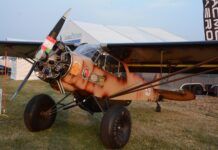
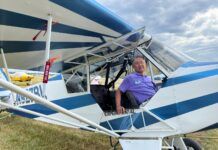
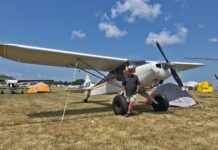
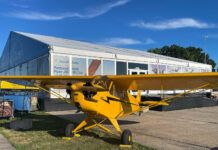
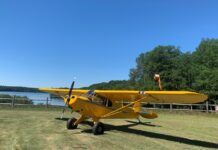
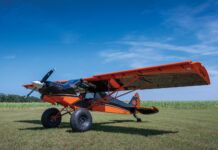
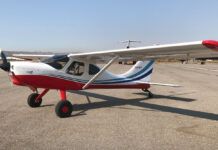
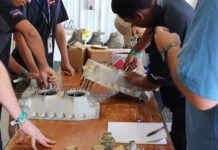
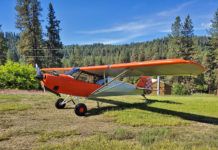
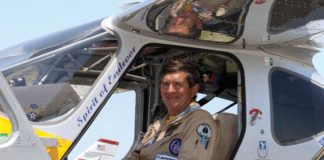
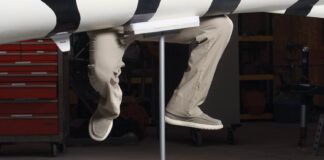

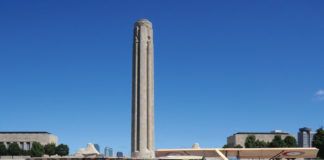
I’ve got a Wag Aero Sport trainer with a C-85 with the O-200 STC producing around 105 hp, super cub gear with Alaskan Cargo Belly Pod and Atlee Dodge mods, 26 inch tundra tires, skis and floats. This is my Alaskan Bush Cub. Care to see photos ?
love to, I have a sport trainer 115 hp, Im building a set of amphib zenith floats. I will probably have to installed a 150 hp and VG’s